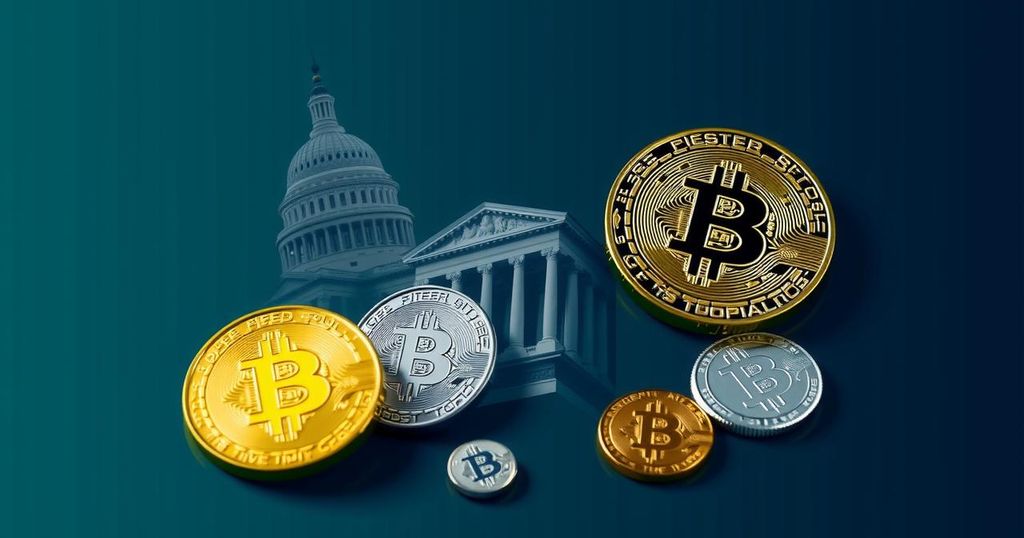Crypto
BID, BIDEN, BITCOIN MINING, CONSOLIDATED NEWS, CRYPTOCURRENCY, ELIZABETH WARREN, HOUSE FINANCIAL SERVICES COMMITTEE, JOE BIDEN, LEGISLATION, MARKET TRENDS, MASS, NORTH AMERICA, ROGER MARSHALL, S. C, SEC, SECURITIES AND EXCHANGE COMMISSION, SENATE, UNITED STATES, US, WHITE HOUSE
James O'Connor
0 Comments
Crypto Legislation Advances Amidst Political Uncertainty
The U.S. House has passed a historic crypto bill, joint resolution 109, targeting SEC regulations, but Senate roadblocks and a potential presidential veto loom large. Other crypto bills remain stalled, while key figures influence the legislative landscape amid upcoming elections, highlighting a complex battle for crypto regulation.
As the political stage preps for the 2024 elections, the winds of change are swirling through the corridors of the U.S. Capitol, particularly regarding cryptocurrency legislation. Recently, the House made history by passing joint resolution 109 in a noteworthy 228-182 vote, aimed at nullifying the SEC’s Staff Accounting Bulletin (SAB) 121. This significant step marks the first time a crypto-focused bill has sailed through a full House vote.
However, the path ahead is fraught with challenges; the Senate, led by a Democratic majority, poses a formidable blockade. Even though some brave Democrats crossed party lines to support the resolution, the Biden administration has indicated that it would likely face a presidential veto, citing concerns over financial stability and market uncertainty.
Additionally, while several other crypto-related bills, including the Blockchain Regulatory Certainty Act and the Clarity for Payment Stablecoins Act, are lingering in committee stage, there’s a glimmer of hope with the FIT Act potentially seeing a floor vote soon. The Senate, meanwhile, sits on a crossroad, with bipartisan proposals like the Digital Asset Anti-Money Laundering Act and the Responsible Financial Innovation Act gathering dust without marked support on the agenda.
As debate rages on, influential figures like Senator Elizabeth Warren hold the reins, exerting pressure on a hesitant Senate despite not always achieving legislative triumph. Thus, as the Senate receives resolution 109, the clock ticks down to potential summer recess, leaving possibility hanging in the balance .
The landscape of cryptocurrency regulation in the United States is evolving rapidly as lawmakers grapple with the implications of digital assets in the financial ecosystem. The recent passage of joint resolution 109 highlights a critical moment in the ongoing struggle for clarity and stability in crypto legislation. As the 2024 elections draw near, both the House and Senate are at a crucial juncture, weighing the needs of the rapidly expanding crypto market against the demands for regulatory oversight. The divisions in party support underscore the complexities of aligning interests and establishing a coherent framework for digital assets that can foster innovation while ensuring consumer protection.
In summary, the crypto legislative arena is witnessing a unique confluence of activity as the House takes steps forward with resolution 109. Yet, the Senate’s reluctance to embrace similar measures, coupled with the looming possibility of a presidential veto, suggests that the path to robust crypto regulation remains intertwined with political maneuvering. As various bills rest on the legislative sidelines, the impending summer recess adds a tick-tock urgency, leaving stakeholders waiting in a state of suspense for what the future holds for cryptocurrency regulation in the United States.
Original Source: blockworks.co




Post Comment